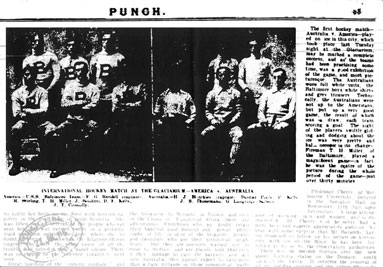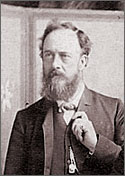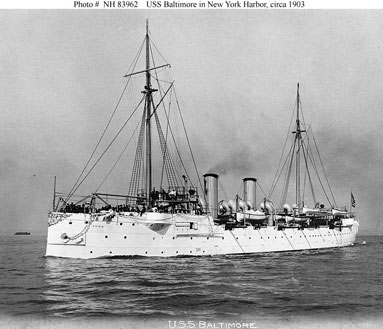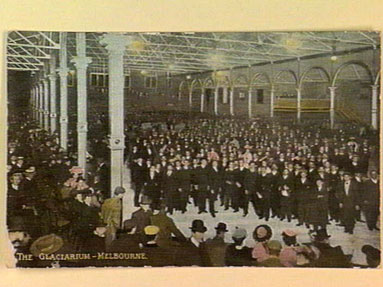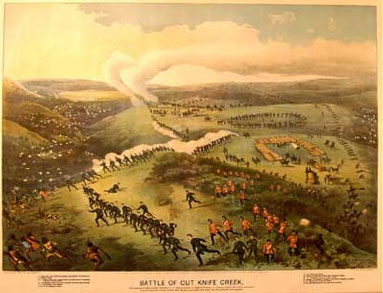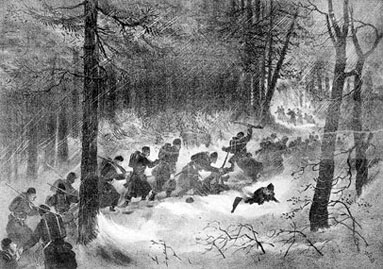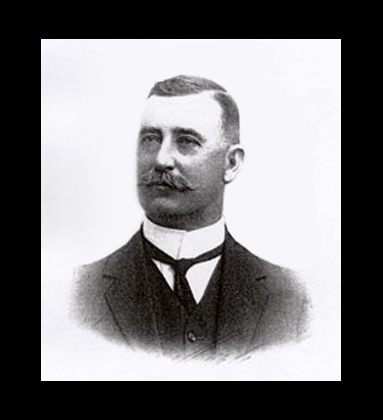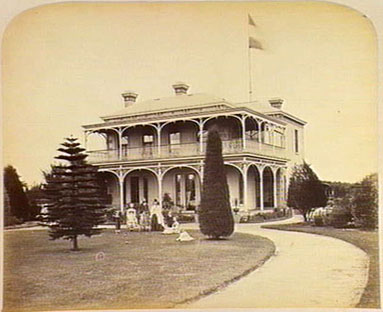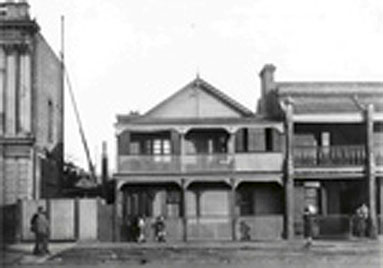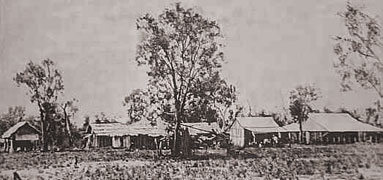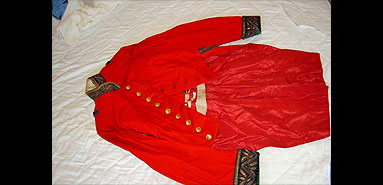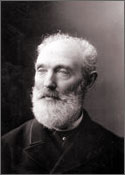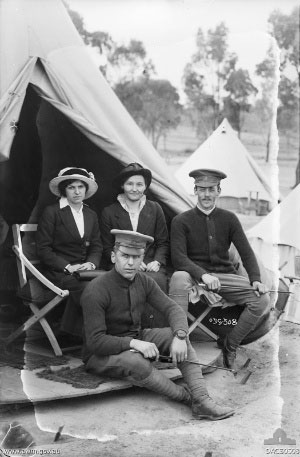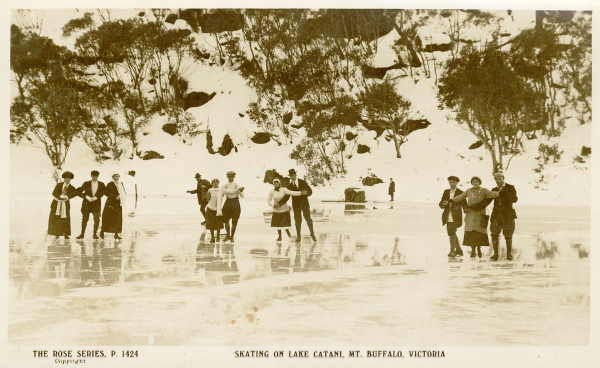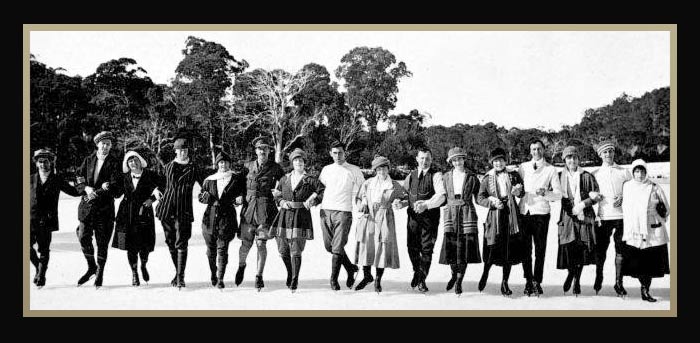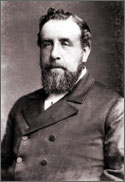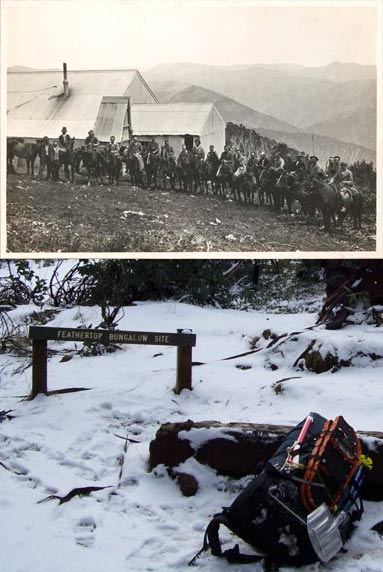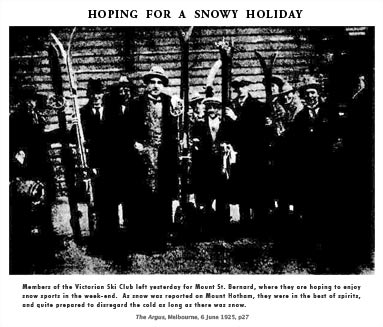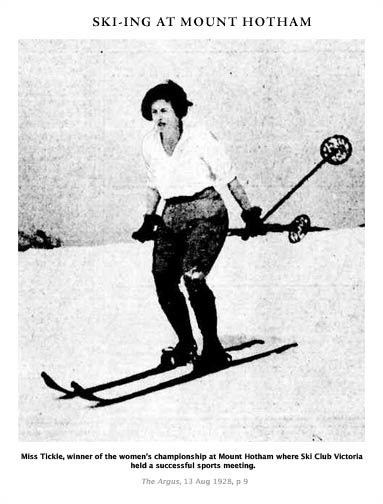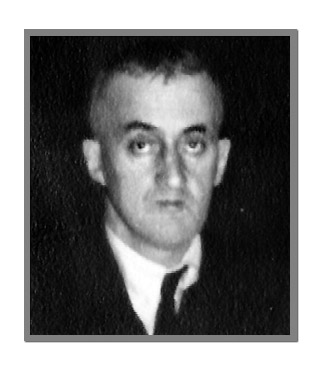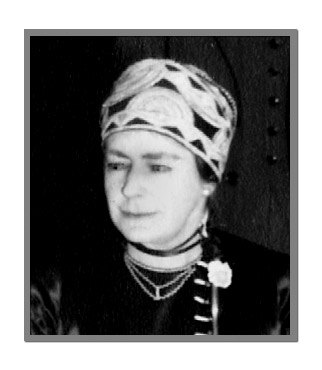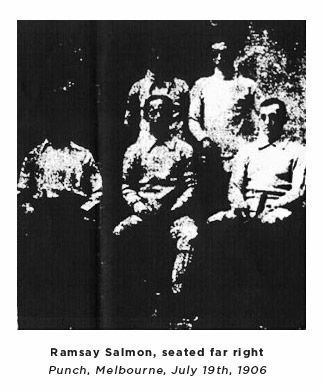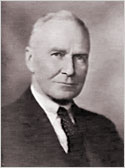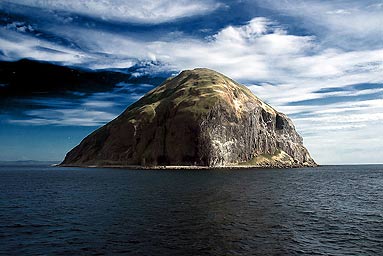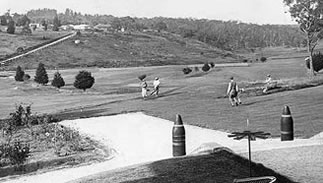Legends
home
You may write me down in history
With your bitter, twisted lies,
You may trod me in the very dirt
But still, like dust, I'll rise.
- Maya Angelou
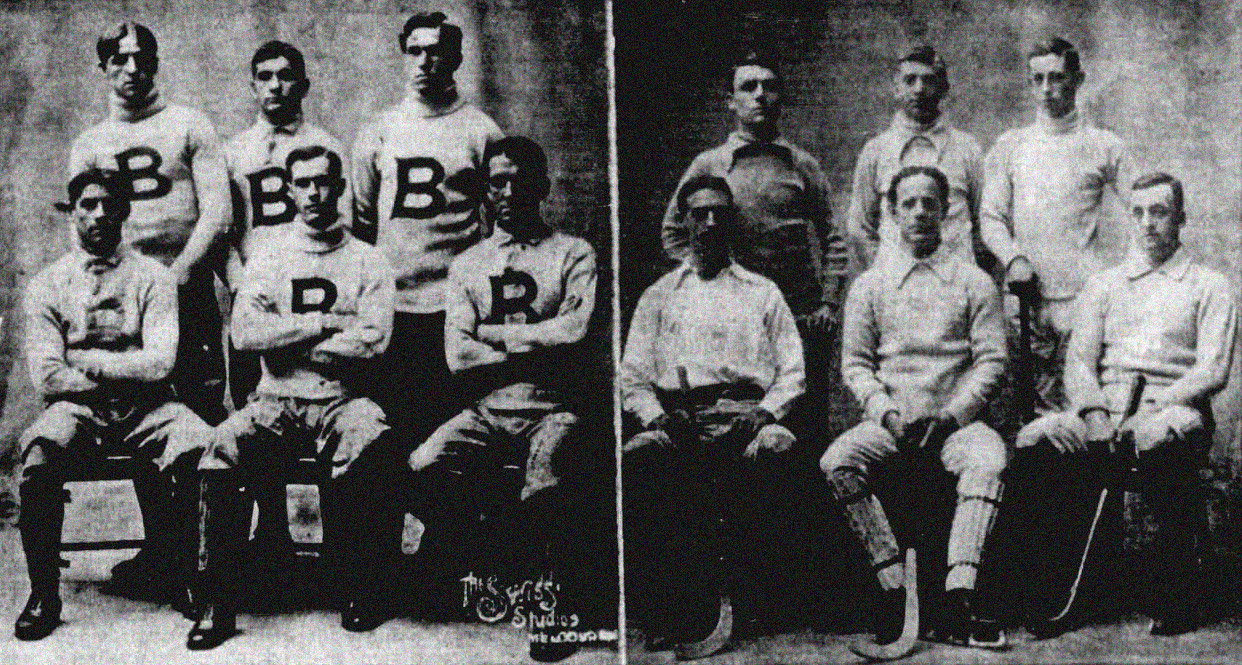
America tied Victoria, 1-1, in two 15-min periods at Melbourne Glaciarium, 9:00pm Tues evening, 17 Jul 1906. On the left, America (USS Baltimore), no particular order: F G Randell (captain and centre), H Stirling, T H Miller (half-back), J Benditti, D F Kelly (goalkeeper), J T Connolly (?-rush). On the right, Victoria: Standing, l to r: Gordon Langridge, C Kelly, Ramsay Salmon (left-rush). Sitting, l to r: Dunbar Poole (centre), Herb Blatchly (captain and goalkeeper), James Thonemann (half-back).
Scorers: Vic: Poole; USA: T H Miller. Best player: T H Miller. Referee: James Brewer, Princes Skating Club, London. Image Source Punch Melbourne 19 Jul 1906, p 13.
1st Australian Ice Hockey Team
Melbourne, 1906
 HE ICE HOCKEY MATCH OFFICIALLY REGARDED as the first organised game in Australia, took place at Melbourne Glaciarium on July 17th, 1906 between players from Melbourne and a visiting New York warship. This is the earliest known Australian record of a specific game of hockey in a specific place at a specific time, and with a recorded score, between two identified teams. The match was reported in 'Melbourne Punch' newspaper on July 19th, 1906:
HE ICE HOCKEY MATCH OFFICIALLY REGARDED as the first organised game in Australia, took place at Melbourne Glaciarium on July 17th, 1906 between players from Melbourne and a visiting New York warship. This is the earliest known Australian record of a specific game of hockey in a specific place at a specific time, and with a recorded score, between two identified teams. The match was reported in 'Melbourne Punch' newspaper on July 19th, 1906:
'The first hockey match — Australia v. America — played on ice in this city, which took place last Tuesday night at the Glaciarium may be marked a complete success, and as the teams had been practising some time, was a good exhibition of the game, and most picturesque. The Australians wore full white suits, the Baltimore boys white shirts and grey trousers. Technically, the Australians were not up to the Americans, but put up a very good game, the result of which was a draw, each team scoring a goal. The sight of the players swiftly gliding and dodging about the ice was very pretty and kaleidoscopic in its changes. Fireman T. H. Miller, of Baltimore, played a magnificent game — in fact, he was the centre of the picture during the whole period of the game — just over thirty minutes.'
The teams were reported as: Australia — H. J. Blatchly (captain), Dunbar Poole, C. Kelly, J. S. Thonemann, G. Langridge, Salmon; and America — USS Baltimore — F. G. Randell (captain), R. Stirling, T. H. Miller, J. Benditti, D. F. Kelly, J. T. Connolly. At the time, none of the Reid's four children had turned 18. Andy was aged 16 years; Hal was aged 15 years; Leslie was aged 12 years and Mirey was aged 10 years. The captain, Blatchly, was aged about 34; Poole was aged 29; Langridge was aged 21; Thonemann was aged 18; and Salmon was about 28-years-old.
This first game was played with a bandy ball and field hockey sticks on a compliant rink with six men in positions, and a goalie. It was hockey on ice, not ice polo or bandy, but in a form that was still evolving into modern ice hockey. The Victorians aspired to North American hockey and they were aware of their departures from the North American game, such as using 6 not 7 players when they were short, at least from this time on. They had experience of the North American game from their expat Canadian goalkeeper and captain, Herbert Blatchly. More exhibition games were played between the Victorians and North Americans, the Canadian Lacrosse Team in 1907 and the US Navy in 1908, culminating in the formation of Australians original four clubs and state association.
The Reid boys were the drivers in the evolving Australian game, commencing in Adelaide in late-1904 with Poole's shinty (bandy) and Caldwell's polo; to Melbourne in 1906 with a compliant rink and the Canadian expat, Herb Blatchly; and the professional skating instructor, James Brewer, who had seen the Princes IHC compete at Princes his home rink in London. This US Navy game followed that same year, then a series of at least two games with a puck against the visiting Canadian Lacrosse team in 1907, and a 3-game series against players from the visiting US Fleet in 1908, using imported sticks, a vulcanised rubber puck and Canadian rules. It was these first encounters with North Americans, especially the speed and puckhandling of the Canadians, that drove the Reid boys on to form both the first clubs and the first ice hockey association in Australia in 1907 and 1908.
Article: Genesis: the first games.
Herbert John BLATCHLY
(1872 - 1948)
HERBERT BLATCHLY WAS BORN IN FEBRUARY 1872 at Islington, in London's inner-city, to parents William Blatchly (pictured left) and Jane Mose. His parents were both born at Marylebone, London, but they married on November 29th, 1862 at Horsell, Surrey, England. [1] They started their family at Woking in Surrey, later returning to central London. By 1881, they lived at 16 Richmond Place, Islington, where William was a 43 year-old lithographic artist with four sons and three daughters. Herbert, 3rd-eldest of the known sons, and twin of Harold, was aged nine and still at school. His older brother Henry, aged fifteen, was also a lithographic artist. [2]
The family emigrated to Québec City in eastern Canada that same year, arriving on May 22nd, 1881, when Herbert was nine years-old. [9] Québec City is a few hundred kilometres from Montréal, the capital of Québec province. Blatchly arrived eight years before Jim Kendall was even born, but Kendall played hockey in Montréal before 1909, around the time Victorian-born Thomas Dunderdale played three seasons with Montréal Shamrocks and Québec Bulldogs (1909 to 1911). Les Canadiens de Montréal, now the NHLs Montréal Canadiens, were founded on December 4th, 1909, six months after Kendall arrived in Australia, but both Dunderdale and Charles Uksila played against them for the 1916 Stanley Cup (see Charles Uksila).
Soon after the young Blatchly arrived, his father joined the Ontario Society of Artists, where his nationality was noted as Canadian in various Fine Art sources. Within a decade, the family had moved to Toronto East. [3] By 1901, William, aged 64, was living with Herbert's brother Percy, age 27, sisters Marion, aged 34; and Josephine, aged 25. Herbert; his mother; twin-brother Harold; elder brother, Henry; and sister, Martha, were not present. His parents were neither divorced, nor widowed. [9] At that time, Albert Blatchly, aged 26 (born ~1855), and his young family lived at Loughborough, Addington, 2 hours from Toronto and Ottawa, and 30 km from the Kingston area where hockey started its modern era in 1860. Sarah Blatchly, aged 60 (born ~1821) lived with them. All were born in Ontario, and they may well have been part of the reason Herbert's family immigrated. [22]
During the 1880s, William worked for the Toronto Lithographing Co, Canada's largest and most advanced, which produced advertising posters and such specialty publications as The Canadian War News, of which his 1885 'Battle of Cut Knife Creek' (image opposite) [16] and illustrations for 'The White Stone Canoe: a Legend of the Ottawas', are good examples. [15] In 1886, he co-founded the Toronto Art Students' League with A H Howard, J D Kelly and C M Manly, driven by the need for a less-formal professional academy. During its lifetime of close to 20 years, the group succeeded in pushing the development of the graphic arts in Canada at a time when public interest in the arts was meagre. [17]
Herbert probably learnt ice hockey in his hometown of Toronto sometime after the age of about eight. He arrived there six years after the first organized indoor game was played by James Creighton [image left] and several McGill University students on March 3, 1875 at Montreal's Victoria Skating Rink; and four years after the first known ice hockey rules were published by the Montreal Gazette in 1877. He arrived in Toronto soon after the first Canadian team had formed at McGill University Hockey Club, Montreal (1877-80). Hockey spread and developed there, in a climate to which it was ideally suited, but not in England and the US until the advent of refrigerated rinks. Forms of the game had been played on ice ponds in Ontario and elsewhere in Canada in the preceding twenty years. The game was first played in Ottawa in 1884. In 1886, in Kingston, Ontario, teams from the Royal Military College and Queen's University were the first on record to use vulcanised rubber pucks. [26] The Amateur Hockey Association of Canada was formed in 1888, with four teams in Montreal, one in Ottawa and one in Quebec City.
Hockey was first played in Toronto in 1887, when Herbert was about nine, and it officially started two years later — in the winter of 1889, when the Ottawa team challenged teams from Lindsay and Toronto. Herbert was aged 16 or 17 by then. The Ontario Hockey Association (OHA) was founded the next year in 1890, to govern amateur ice hockey. Junior hockey was first played in 1892 without enforced age limits, when Herbert was still age-elligible. By the end of 1893, there were more than one hundred hockey clubs in Montreal alone. In 1895, College athletes from the US and Canada played the first international series of matches; Senior and Junior league competition began at Ontario in 1896; and in 1904, five teams in the US and Ontario formed the International Hockey League, the first pro league. It lasted three seasons until the end of 1906, but its world-famous successors soon followed.
Blatchly immigrated to Australia sometime before 1902. Miss C S Blatchly arrived in 1905 on 'Ormuz'. [7] Herbert was a member of the Canadian Yacht Club in 1902, the Sydney's Prince Alfred Yacht Club in 1903, and Honorary Secretary of the New South Wales Lacrosse Association until May 1904. He was selected to captain the first officially organised Australian Hockey Team against USS Baltimore, in Melbourne on Tuesday evening, July 17th, 1906. [27] During the preceding years, Tommy Dunderdale, born at Benalla, in country Victoria, on May 6th, 1887 [25] [image left] had moved to Canada and started pro hockey at the age of 18 with the Winnipeg Ramblers (1905-06), and Winnipeg Strathconas (1906-07). Ice Hockey was first played in Winnipeg and Victoria in 1890. Dunderdale's success was no doubt published in Canada and probably Melbourne. He went on to play seventeen professional seasons from 1906-24, becoming the first Australian to be inducted into the Hockey Hall of Fame as a player in 1974. [13]
Blatchly does not appear in published records of Australian hockey competitions after the first games in 1906, 1907 and 1908. But he was already in his mid-thirties and in 1908 he married Eva Mary Middleton in Melbourne. Eva was born at Melbourne in 1881, the daughter of James Phillpot Middleton and Harriet Vaughan. [4] Herbert and Eva had two daughters, Nancy Jean (1910– ) and Marion (1914– ), both born in Melbourne. They lived in Melbourne's eastern suburbs at John Street in East Kew (1909, 1931, 1936), Canterbury (1914), 19 St John's Avenue Mont Albert (1916), Surrey Hills (1919) and Healesville (1944) [34]. Herbert had a business in central Melbourne in 1924, [31] and he had also traveled, returning to Melbourne from a British port on 'Orsova' in June, 1911, aged 39. He traveled again the following year, returning in October 1912. He was in Britain at the same time as Dunbar Poole and Ramsay Salmon, and there seems little doubt that he had introduced Poole to North American ice sports. Poole visited San Francisco the year after, again in 1915, and by 1922 he had become a professional instructor at Minto Skating Club in Ottawa, Canada. Blatchly took his family to San Francisco via Vancouver in 1920, where they remained for almost six months, at the same time that Charles and Lena Uksila visited Australia to train skaters and ice hockey players. [32, 33] A commercial artist by the name of H Blatchly lived in San Francisco in the 1920s and visited Autralia in 1929. He was probably Herbert's eldest brother, the lithographic artist Henry. [35] Herbert's father died in 1903 and his brother Harold and young family had moved to Ottawa by 1911, where Victorian-born Tommy Dunderdale had commenced his ice hockey career sometime after his arrival in 1894. [9]
Ice sports at Sydney Glaciarium underwent a major transformation after the war in 1920 (see Leslie Reid). That year, Blatchly traveled from Sydney to Vancouver, BC, arriving on July 17th with his wife, Eva, and their two young daughters. At the same time Charles and Lena Uksila made the first of two trips to Australia, returning to Vancouver in October 1920 from Sydney. The Blatchlys remained in North America, where they no doubt visited family in Ottawa, but Herbert was registered to vote in San Francisco on the west coast, where the family of John Goodall lived, and within easy access of the leagues in which Tommy Dunderdale and Charles Uksila played. They returned to Sydney from Vancouver in April 1921, just before Goodall Cup ice hockey in Australia resumed after the war interruption. Herbert Blatchly and the Jacksons were instrumental in securing the Australian engagement of the Uksilas, and it appears Jimmy Bendrodt in Sydney was also involved, since he accompanied Lena Uksila to Australia in 1923.
Herbert John Blatchly died at Melbourne about December 20th, 1948, aged 76. His wife Eva died about November 17th, 1974, aged 93. They are interred together at Springvale Botanical Cemetery, Clayton, Victoria; (Banksia - Wall Niche H 690). [5, 29] Herbert's twin-brother Harold, also became a lithographer and married Edna Bates. They had a son, William Herbert, on May 23rd, 1904 at Ottawa. [19] Harold and Edna were buried at Beechwood Cemetery, Ottawa. [20] Herbert's sister, Josephine remained in Toronto until at least August 1906, when she was a witness at the age of thirty to the marriage of Charles Robertson and Edith Ryan. [18]
Official hockey histories [8] credit Dunbar Poole with introducing figure and speed skating to Australia, but that honour is very doubtful and Poole certainly cannot be properly credited with introducing modern ice hockey. Poole was an employee of the rink organisers and so it is not surprising he was a member of the first organised ice hockey team to play here, but not as captain. Although it was somehow lost between the cracks of history and Poole's tales, that honour went to a 34 year-old English-born Canadian, who had emigrated from Toronto to Melbourne for life: Herbert John Blatchly, son of notable Canadian artist W D Blatchly. This apparently went unmentioned throughout a lifetime association with the New South Wales administration. Poole played in the first organised game in Melbourne, then moved on to manage the new Sydney rink. His employer, H Newman Reid, stayed on as manager of the Melbourne Glaciarium where Australian ice hockey was soon firmly and indisputably established.
In light of the above, and other historical information that has been published for some time, [24] these claims by Tange and IHNSW are also incorrect:
'This year [1911] was a landmark in Australian Ice Hockey which brought it in line with the latest style of hockey in Canada. It saw the demise of the English Bandy type of play and replaced it with the Canadian style, based on the rules and regulations as drawn up in 1879 at McGill University, Montreal. Jim Kendall came from Halifax, Nova Scotia, Canada. He would have been the first Canadian hockey player not only to play in Australia, but also to settle here. Jim's training and ability completely revolutionised Australian Ice Hockey.' [23]
Canadian rules and sticks made in Nova Scotia were introduced to Australian ice hockey in Melbourne between 1906-8, and Jim Kendall was not the first Canadian hockey player to "not only to play in Australia, but also to settle here". Any Australian would have been impressed by Kendall, and he may well have 'revolutionised' the game for New South Wales but, to a very large extent, that had already happened at least three years earlier in Melbourne, as described and acknowledged quite clearly in "History of the Goodall Cup". [24]
It's debatable, but still generally accepted, that ice hockey began its modern era as the result of a game that was played on the frozen expanse of Kingston Harbour, Ontario in 1860. Because it was the first time on record that a puck and not a ball was used, distinguishing the game from field hockey on ice or its five other historical forms — ricket, shinty, lacrosse, hurling and bandy. Those first players were British soldiers; Crimean War Veterans from the Royal Canadian Rifles. From the age of eight or nine, Herbert John Blatchly was raised 30 km from there in Toronto, and it is highly improbable that he was appointed captain of the first organised ice hockey teams in Australia without hockey skills. He probably trained according to evolving Creighton rules in the Ontario Junior league or its forerunners, which officially commenced in 1892 at Toronto; one of the earliest junior leagues on record. The first connection with ice hockey worth celebrating in this country was more likely its birthplace, Canada, via the Captain of the first Australian teams in Melbourne between 1906 and 1908.
Historical notes:
[1] In June 2002, the Society for International Hockey Research released an 18-page report concluding that the first ice hockey match was played at the Victoria Skating Rink in downtown Montreal on March 3, 1875. In July, the International Ice Hockey Federation (IIHF) picked Montreal as the birthplace of ice hockey over other Canadian communities – including Kingston, Ontario and the spot near Windsor, NS where many Nova Scotians feel the first game was played. Although sports that resembled hockey may have been played in other places before 1875, the first actual game with a puck, nets and a specific set of rules was in Montreal, according to the federation. [30]
James Service THONEMANN
(1888 - 1957)
J S THONEMANN WAS JAMES, son of Frederick Emil Thoneman (1860–1939), sharebroker and ASX member, and Margaret Louise Service, born England. The Melbourne Thonemann family descends from an old patrician family of Warburg-Westphalia in Germany, which dates back to 1275, and from which also descended the Confessor to Kaiser Karl VI; an Abbot of Hardehausen; the Founder of Warburg Grammar School; and a number of nobles. James was the grandson of James Service [pictured left] whose name he bears. Possibly no other Victorian politician has ever held such widespread public confidence and affection as Service, who was Victorian Premier 1880, 1883–86. From the time of his arrival in Victoria, James Service resided in the South Melbourne and St Kilda area (both now part of the City of Port Phillip). Born in Scotland in 1823, he arrived in Melbourne in 1853, where he became a successful merchant and shipowner. By the mid-1860s, he had moved to St Kilda and, in 1871, he lived in a grand twelve-room house in Carlisle Street, named ‘Kilwinning’ in honour of his birthplace in Scotland. There, he spent the last days before his death in 1899.
Service had initiated the first successful sustained campaign for a federal union of Australian colonies. During his political career he declined a knighthood. He had been a school teacher in Aryshire, Scotland, prior to emigrating to Australia, and his father, Robert Service, was a zealous preacher of the Churches of Christ. Like John and Robert Reid, James Service was converted from Presbyterianism by the Baptists. However, his inquiring mind led him to scepticism and, despite his father’s beliefs, he eventually lost faith in organised religion. He abandoned teaching following a bout of tuberculosis in 1845, and in 1846 he joined the coffee and tea business of Thomas Corbett & Co. [11]
James Thonemann's father, Frederick, lived behind James Service in a house called 'Illawarra' (plan pictured right) at 100 Hotham Street, St Kilda East, [12] a short walk from the manse of Rev John Reid on the next corner (Hotham-Inkerman). Frederick returned to Melbourne from Britain on 'Mongolia' in July, 1904, and his wife and 3 male children, aged 11 to 16, returned in February, 1906, also on 'Mongolia'. [4] They were both in their mid-30s. James was about 18 when he played the USS Baltimore team. His grandfather Julius Emil Thonemann (? –1891), the Austrian Consul in Australia, was married to Louisa Mary Piper (image below; Brighton Rd house). Their other children included Emil Sterling, d. 1891; and Louis Arnold, d. 1935. [6] Fred Thonemann traded as Fred Thonemann & Co, Security Brokers and Dealers, and he was one of the earliest members of the Australian Stock Exchange from 1888 to 1939, trading at 10–11 Queen Street in Melbourne, a few doors from the offices of John Goodall & Co (see John Goodall). The firm became known as Thonemann Robertson Thompson Pty Ltd in 1888–9. [13] These are some of the few civil records of the unusual Thonemann family name in Victoria.
James' younger brother, Harold Eric Thonemann (1890-1962), was born in his parents home, 'Illawarra' at East St Kilda in October 1890. [12] He was the eldest son to return from Britain with his mother and brothers early in 1906. He was also a Melbourne Grammarian, sharebroker, company director, and grazier who owned the 1,300 square mile 'Hodgson Downs' station, Northern Territory, and purchased the adjoining 2,500 square mile Elsey Station, which the family held until 1959. The early years of Elsey from 1881 were the context in which Aeneas Gunn's book and film 'We of the Never Never' was written. Harold later wrote 'Tell The White Man: The Life Story of an Aboriginal Lubra.' [7] in which he attempted to arouse interest in not segregating natives into compounds, but preserving their tribal life by preventing their deterioration through contact with the white man. The Fraser family also owned extensive property in the Norther Territory (see John Goodall). Harold was principal of Thonemann & Company from 1939 (sold to HSBC and so became a forerunner of Merrill Lynch HSBC Australia Pty Ltd which is still an active ASX Participating Organisation).
Harold was MLA for Toorak in 1941–45 and parliamentary secretary and whip in 1943–45. He was not endorsed by the Liberals in 1945; the year he was defeated. Amongst his various business interests were a number of ice companies and distilleries: Metropolitan Ice & Fresh Food Company Ltd (known as Metropolitan Industries from 1952 and taken over by Mayne Nickless Limited in 1964), Australian Distillery Company Ltd (taken over by Equity Management Limited in 1966), Deepdene Ice Company Ltd (Deepdene is near Balwyn where Robert Reid lived), Sydney Cold Stores Ltd (taken over by Marcus Clark and Company Limited in 1961) and Federal Distilleries Pty Ltd. Sydney Glaciarium was built over the premises of Sydney Cold Stores Ltd at Railway Square in Sydney, where the Marcus Clarke stores were also located. Harold married Nora Kate Shields in 1922, daughter of John Shields and Ellen Connor. He died in Toorak in 1962, age 72, and wife Nora died in 1985.
Whilst Melbourne Glaciarium was being built, its syndicate issued a prospectus to finance a third rink in Sydney. It officially opened on the July 25th, 1907 and closed in 1955. The ice surface was about 54m by 23m, the minimum size for International matches at that time. James Thonemann is said to have had a large financial interest in both skating rinks, yet he was quite young to to be independently wealthy. It seems more probable that James' sharebroker family were syndicate investors, perhaps facilitated through Old Grammarian links. His brother, Harold, had extensive interests in ice companies including the one beneath the Sydney Glaciarium that provided its refrigeration, and the Thonemanns were closely associated with the Reids.
Melburnians IHC, one of the original four, were Melbourne Grammar Old Boys who dominated the league, pre-World War One. The School's first forty years were a struggle, not helped in the 1890s by economic depression, financial concerns and a number of changes of headmaster. Falling Senior School enrolments in the early 1890s prompted a desire among Old Boys to do something "to save the Old School". They formed The Old Melburnians Society in April 1895 "to be the means of bringing together many former schoolmates, reviving pleasant recollections, and at the same time benefiting the life of the School as it is today." The Society has been a vital support group of the School for over one hundred years. It lent it's name to one of the original four ice hockey clubs and later, the VAFA Old Melburnians Football Club, formed in 1920. [5] The Melbourne Girls Grammar School formed a field hockey club in 1908 which won three consecutive State premierships, 1911, 1912 and 1913. In 1913, it won the Dunraven Cup. Lack of support led to its disbandment during the 1980s. [8]
Tange has written the first Sydney match was played on October 3rd, 1907, billed as NSW versus Victoria. His records did not explain the billing, nor the origin of the NSW participants. He concedes it was possible the team consisted of only six players (common until 1908); the match was two ten-minute periods; and Poole probably formed the New South Wales team from teaching staff and patrons of the Sydney rink. [3]
The Victorian team were, of course, members of Melbourne Glaciarium visiting Sydney for the opening. As Tange notes, the group was organised and led by Thonemann, who had played the USS Baltimore in 1906. There is no record of the names of other participants in this match, nor the result. Tange refers to a second match advertised as "Hockey on Ice" on Saturday August 31st, 1907 — "Black Team v. White Team". He had a record of that match and Poole did play. Ramsay Salmon who played in the first Melbourne team was also on the team. Tange cites the date of the 2nd match before the 1st, so something is not right with his account. The 'Black v. White' match may have been first, followed by the NSW v. Victoria match. In any event, for some reason, both IHA and IHNSW discount this 1907 game as the first interstate match, even though it took place, in deference to the 1909 series:
"1909 proved a momentous year for Australian Ice Hockey as a NSW team travelled to Victoria to play the first official Interstate series.... The Victorian Team: Messrs Jackson, S L Reid (Leslie, son of Henry), Woods, Blair, Smith, Purbick [9] and Heywood. The NSW Team: Messrs Pike, Turnbull, Docker, Rowe, Forsythe, Cuthbertson and Fowler." [3]
Dunbar Poole had been a part of Reid's rink developer syndicate through three capital cities, finally coming to rest in the last. Although he mostly lived in New South Wales when in Australia, he traveled widely; returned to Melbourne and Britain, competed in Europe, visited America, worked in Canada, and represented Sweden where he was a registered member of the figure skating club. Yet, there are no known records of Australian representation. So, it is unsurprising that he and Ramsay Salmon changed colours to help establish New South Wales hockey and the first interstate competition. As did a son and only daughter of Henry Newman Reid. The sport was all the better for it in both cities, even though a long and bitter rivalry emerged between the States, which delayed national and international development of Australian ice sports in some areas (see Mireylees Reid).
During these years, Melbourne was the largest and most important city in Australia — the temporary capital from Federation until Canberra (1901–27). Unlike other capitals, Melbourne was founded by free enterprise in 1835, against the wishes of the Colonial authorities seated in Sydney, and the Thonemann merchant-broker family lines were very prominent in the first-generation of the city and thereafter. It is also significant that James' grandfather on his mother's side, was both a Federationist and municipal President of Emerald Hill (now South Melbourne) in which the Glaciarium site was located at the time. Henry Newman Reid worked as a broker at the time of his marriage in 1888, which was also the year Fred Thonemann & Co (Thonemann Robertson Thompson Pty Ltd) beame a member of the Australian Stock Exchange. Henry Reid had probably developed and maintained a long business association with the Thonemann family, who had extensive interests in ice works, distilleries and refrigeration in Melbourne and Sydney, including the main cold store over which the Sydney Glaciarium was built.
At the age of 52, James enlisted in the Australian Army during World War II on July 11th, 1940 at Preston, Melbourne, although he was still residing at Caulfield. He gave his date of birth as February 26th 1897, and his next of kin as 'A Thonemann'. However, his birth date was inconsistent with other records which suggest he was born about ten years earlier. He had probably lowered his age by ten years in order to be serve in the war. [3] The Army hold no records on his date of discharge, rank or posting. As far as is known, James lived in Melbourne all his long life until his death at Caulfield in 1957, aged 69. James Service Thonemann and Ramsay Salmon are the only players on record to have played for Victoria in both inaugural matches in Melbourne and Sydney. Before the advent of Interstate competition, he was the first Victorian ice hockey captain; a son of the fabled Old Melbourne Establishment that still lives on in the city's sporting and cultural institutions. James was young Melburnian with resources, influence and passion, selected to lead the first interstate team, and it is surprising that the formative years of National hockey in Melbourne after 1907 seem to have officially unfolded without him.
James Service Thonemann died about September 1st, 1957 in Melbourne and was cremated at Springvale Botanical Cemetery at Clayton, Victoria, on September 4th. His brother Harold died about August 5th, 1962 and was also cremated at Clayton on August 7th. He was interred with his wife, Nora Kate, who died in 1985. Their memorial is located at Genista 2 Bed 4 Shrub 76. [14, 17]
![]() Sir James Service | 1886 | Service Balaclava Residence | mid-1860s | James Service & Co | undated |
Sir James Service | 1886 | Service Balaclava Residence | mid-1860s | James Service & Co | undated |
JULIUS EMIL THONEMANN (1842 – 1891) James' grandfather, sailed to Australia in 1854, on the "Antoinette Cezard". His son, Frederick Emil Thonemann was was born in 1860 in Melbourne, and was educated at the Melbourne Church of England Grammar School, in St Kilda Road. He had a brother named Louis Arnold, and a sister (or stepsister) named Minna Augusta, neither of whom married. Both Frederick Emil and his brother Louis were appointed consuls successively to Victoria, Australia, from the Austro-Hungarian Empire (1871–1875). The exact reason for their emigration and subsequent British Status under Queen Victoria, are not known, but the most likely reason was political unrest in Germany. Frederick (known as Emil) started work as an ‘Office boy’, possibly in his father’s early business. His unique ability to judge the quality of wool by the feel in his fingertips helped him to set up a wool broking business known as Thonemann and Lange. When his business prospered, he set up as a stockbroker, trading as F Thonemann and Sons from the National Mutual Building, Melbourne (now A C Goode House). He retired in 1930, and the business was continued by his eldest surviving son, Harold Eric. Frederick's business interests were many and varied, including Elsey and Hodgson, the 4 million acre cattle station on the Roper River in the Northern Territory, which was sold when he died in 1939.
Emil also bought some 1,000 acres about 60 miles north-east of Melbourne, in land part-cultivated and part rain forest, which was named ‘Bennak’. Beenak is located in the upper reaches of the Yarra River in the Yarra Valley. The Great Dividing Range is the boundary to the north. High above the surrounding country, he built a great house named ‘Merriyula’ with fischponds, flower gardens, croquet lawn and vegetable garden. The property was surrounded by a 20-foot high holly hedge and at the entrance to the house property were two giant sentinel trees. To reach Beenak, a train from Melbourne stopped at Yarra Junction, then a narrow gauge railway chugged up the valley to Williamstown. This train brought down cut timber from the rain forest. In 1919 the house itself was destroyed by fire. Beenak was some 1,700 feet above sea level, surrounded by a state forest of enormous eucalyptus trees. Initially Emil rode there on horseback from Melbourne, stopping at Box Hill on the way. Later, he bought an open car (probably about 1917) and travelled more comfortably. There was no electricity, no gas, no water services nor other utilities of modern life. Water was pumped up from a dam about a mile away, by a four-cylinder hydraulic ram. With produce from the vegetable garden and the farm the house was self-supporting.
Frederick Emil is not recorded in Baptismal files because his father, Julius Emil, lived with a ‘common-law’ wife, Mary Noble, née Piper. This stable relationship produced several children. The reason for this unconventional arrangement, seems to be that Mary Noble was married to Mr Noble (untraced) and a woman could not obtain a legal divorce in the manner familiar to us today. Their union appears to have been a happy one, notwithstanding, and in his will, Emil speaks with affection of the woman who has shared his life, and bore his children. Julius returned to Germany, perhaps on business, in 1874, and died prematurely at the age of 49 years. He is the forefather (with his English common-law wife) of all the Thonemanns in Australia and Great Britain. There were nine children of the union (possibly a few step children) but only four survived into the twentieth century.
Frederick married twice. As noted above, he and his first wife, Margaret née Service, had three children. Emil Howard, born 1891, fell in France, in the First World War, and his name is recorded at the famous monument near Arras by architect Sir Edward Lutjens. The other two sons, James and Harold, survived. Frederick married for the second time in 1913, to a young Scottish lass, Mabel Jessie from Glasgow, whom he had met on a visit to Britain; "It was a very propitious match for a respectable, but not particularly grand, middle-class Scottish family, with the name of Fyfe." Frederick was considerably older and at 18 years of age, Mabel left her native land for the other side of the world, never to return, except for brief holidays. Mabel had four children, three sons and one daughter. The four in order of birth were Frederick Fyfe (1914), Peter Clive (1917), Gwenda Hope, and Ronald Howard. The eldest is dead, and Peter Thonemann is the oldest surviving son of the Australian branch. All four children have families. Frederick Emil spend his life in Melbourne, Australia, except for brief visits to Great Britain. He lived in the Melbourne suburb of Kew with his second wife. Frederick and Peter attended Melbourne Grammar School, as their father had done, and at that time the family lived at 33 Burke Road in Kew. Frederick retired in 1930, and died in 1939. [15]
PETER THONEMANN (1917 – present) Born on June 3rd, 1917, in the family home of ‘Rathgawn’, at Kew, Melbourne. It was a large rambling house that later became a residence for the Salvation Army. The family later moved across the road to a smaller house. Peter never met his paternal grandparents. His father never discussed his relations, living, or dead, nor did he discuss his financial affairs. In 1936, Peter began a physics degree at Melbourne University, living in a one-bedroom flat. His brother, Frederick, joined the university debating team, which travelled the world, and so they saw little of each other. His sister, Gwenda, then ten years-old, was at school. Peter played billards, occasional tennis, and he was a member of the university skiing team which visited Mount Hotham. In 1940, when war broke out, Peter worked at the Munitions Supply Laboratories at Maribrynong, Victoria, where he stayed until 1942. He left to join the research department of Amalgamated Wireless, at Ashfield, near Sydney. In 1944, he was accepted by Sydney University to read for a Master’s degree in Science. He met his future wife in Ashfield and they now have two children, a son and a daughter. His son, a schoolteacher in London, graduated from Balliol College, Oxford. In 2000, Peter Clive Thonemann was Emeritus Professor, University of Wales, at the age of 83. [16]
JACK KEITH CURWEN–WALKER (1888 – 1918) The Victorian player named "Walker" on the 1909 Goodall Cup team was Jack Keith Curwen-Walker (1888–1918), son of Lucy and John Christian Curwen-Walker ( –1905), of Prahran, the Riverina (Deniliquin) in New South Wales, and later 27 Valentine Grove, Malvern, Victoria. He had a brother named Maxwell and sisters Doris, Edna and Kathleen. After his father's death, he moved from the Riverina to "Snaefell', Lewisham Road, Windsor in Melbourne, with his grandmother and aunts, who organised his education at Brackley Preparatory School, also located in Lewisham Road, and then Wesley College until the age of 17. The long-time principal of Brackley was Miss Lascelles (1834–1918), one of twenty-one children of London-born Thomas Allen Lascelles (1783–1859), who had arrived in Tasmania in 1808 as ADC to Colonel Davey, the Governor, and later became a police magistrate. The school was famous as a feeder to the public schools, particularly Melbourne Grammar, producing many boys who won scholarships at the larger schools. Miss Lascelles was a strong believer in athletics and many Brackley students also excelled in public school sports. [18] Walker worked with W T Tuckett & Sons, Accountants, in Collins Street, Melbourne, joined the Union Bank, and later started an agency for the Indian Motor Cycle Co. He was 22 years-old when he played the match, 5-feet 8-inches tall and weighed 145 pounds. He was still skating five years later when he "executed fancy evolutions" at the Melbourne Glaciarium carnival on August 26th, 1916. [18]
Walker had served with the Prahan militia reserve or cadets and became a flight lieutenant and pilot of 2nd Squadron, A Flight, Australian Flying Corps. He was with 1 Squadron AFC when he was killed in an aircraft accident at Ramleh, Palestine on May 3rd, 1918. He took off at dawn that day in Bristol A7198 with Corporal Neils P B Jensen. The fighter bi-plane inexplicably spun into the ground and crashed, killing both pilot and observer. [01] It is pictured and profiled on the web site of the Australian Flying Corps. In his last letter home he had said his machine had been badly hit in action, but on that occasion he had landed unhurt. He was about 28 years of age, and was well known as a daring motor bicycle rider, and as such held some notable records. He joined the Flying Corps at its first inception at Point Cook, and soon showed himself to be a bold and enthusiastic airman. [02] Curwen-Walker was buried at Grave No 46, Ramleh Military Cemetery, 12 miles south-east of Jaffa on the railway to Jerusalem. His name is located at panel 188 in the Commemorative Area at the Australian War Memorial. [18] His war service medals and belongings were collected by his aunt, Miss I H Curwen-Walker and cousin, Henry Cleburne Curwen-Walker (1868–1920), solicitor of 22 Lydiard Street, Ballarat in Victoria. After the military cemetery was established, his mother was grateful to receive the metal plaque his squadron had made for his temporary grave. Henry Cleburne Curwen-Walker had earlier lost his son, Lieutenant Arthur Herbert Curwen Walker (1894–1915) of 14th Battalion G Company, who died of wounds at Gallipoli on May 3rd 1915. He was 20 years of age, and born in Ballarat where he had lived until he entered Duntroon Military College, having received his education at the Ballarat College and Ballarat High School. He was 6-ft in height, and reportedly a magnificently proportioned man. He is commemorated on the Lone Pine Memorial (Panel 39), Gallipoli, Turkey and Panel 72 of the Roll of Honour, Australian War Memorial. Jack and Arthur's names are mentioned in the same documents and they were well-known to each other. [18]
![]() Walker's fighter | Bristol A7198 | Walker's Grave at Ramleh | c 1918 |
Walker's fighter | Bristol A7198 | Walker's Grave at Ramleh | c 1918 |
DUDLEY FORSTER WOODS (1892-1954), who played on both the 1909 and 1910 Interstate teams, lived at 'Studley' in Mathoura Road, Toorak, Victoria. His father William was a Collins Street sharebroker and a chairman of the Melbourne Stock Exchange, who was bequested the income from an investment of 1,000 pounds on the death of Harry Howard-Smith in 1935. [03] Howard-Smith was a former chairman of directors of the company that managed Melbourne Glaciarium. Dudley was a wireless engineer who fought in the Great War with the 69th Squadron, Australian Flying Corps. He had two brothers Errol (1889–1958) who was a founding member of the first VIHA, and Ronald (1898–1952) who won second prize for the most striking costume at the Melbourne Glaciarium carnival on Saturday evening, August 26th, 1916. Ronald was 2nd Class Air Mechanic in the 1917 Reinforcements, AFC, during the First World War. He became a Lieutenant in the 7th Battalion and returned to Australia 26 July 1919. [19] The Woods boys were grandsons of James Service on therir mother's side.
Gordon David LANGRIDGE
(1885 - 1955)
BORN IN MELBOURNE IN 1895, the son of George Thomas Langridge and Ellen Ann Darling; [1] Grandson of George David Langridge (1829–1891, pictured left), Mayor of Collingwood 1867 and 1872; MLA for Collingwood, 1874–91 and Premier of Victoria in 1891 when he died suddenly at his home in Clifton Hill on March 24th, at the age of 62. [3] George was a foundation member (1884) and president (1901–03) of the Melbourne Shakespeare Society, and well-known to Rev John Reid, father of Henry Newman Reid. Langridge Street in Collingwood is named after him. Gordon Langridge was 6 years-old when his prominent grandfather died. He had traveled to Britain before he was 20 years-old, returning to Melbourne in November 1905 on 'Omrah'. [4] The next year, at about the age of 21, he played the first organised game of ice hockey in Australia against the USS Baltimore team. He continued to play National hockey for many years.
Langridge continued his father's business trading as Gordon D Langridge Pty Ltd at 10 Queen Street, and later 380 Collins Street, Melbourne, an estate agent and auctioneer for commercial properties in the city. He auctioned the House of Commons Hotel at 187–193 Elizabeth street in 1929. He married Jackleen Eileen Elizabeth Dodds in 1914, when he was 29 years-old. [5] In 1918, he was awarded the "Independent" National Waltzing championship title at Melbourne Glaciarium, with Mrs Thompson, attended by Dunbar Poole and Ramsay Salmon. [152] The family lived at Neerina in Sutherland Road, Armadale. His son James Gordon, was born August 6th, 1920 at Armadale, [6, 10] and the couple had at least three other children each of whom served in the second world war: John David born May 22nd, 1917 at Armadale, Victoria; Valerie Jean born February 14th, 1919 also at Armadale; and Margaret Ellen born April 20th, 1923 at Melbourne. [10] By 1927, Langridge and his family had moved to Craigietar in Huntingtower Road, Malvern, then to the Melbourne suburb of Fawkner. In 1921, when interstate games were resumed, the remaining pre-war players alive and capable were drafted into a team. It included Langridge, aged 36, and Ted Molony, for the first time. Others were C Webster, M Harris, R Marks, Victor Langsford (1897– ), W Roche, and John Goodall. [9]
Langridge founded the Ski Club of Victoria on June 2nd, 1924 and became its first president. [11] The goldminer and skiing promoter, Bill Spargo (1888–1959), was an early member who had opened up Mount Hotham to skiing the same year. A month later, Langridge was a member of an expedition to the Bogong High Plains in the Victorian Alps, organised by the Bright Progess Association, which investigated possible sites for a winter sports ground. Langridge also founded the Chamois Ski Club at Mount Buller in the Victorian Alps the following year. These were the first two ski Clubs in Victoria, and Langridge is credited as the pioneer of organised skiing in the State. Ski Club of Victoria became the State controlling body but, when it was first founded, skiing as a sport was almost unknown, and what primitive skiing there was centred on the Government Chalet at Mt Buffalo. Its lessee, Norwegian Hilda Samsing of Fawkner, operated the chalet from when it first opened in 1910, until the Victorian Railways took over in 1924. She became a close friend and associate of Langridge and that same year they formed a syndicate, led by Langridge, to build Feathertop Bungalow at Mount Feathertop.
They started with a well-graded pack-horse track up Bungalow Spur from Harrietville, to allow building materials to be delivered. The Bungalow was prefabricated in Malvern Road, Prahran by Davies & Co, and then transported to Harrietville. Six sleds, each pulled by six horses, moved the sections from Harrietville to the building site, where it took three weeks for seveteen carpenters, two plumbers and six labourers to erect it. There were eight bedrooms with four beds in each, a large dining and lounge room, two bathrooms and a kitchen. It had electric light and hot water and, after fit-out and delivery of fifty pairs of Norwegian skis, it opened for business on July 13th, 1925 with a display of fireworks in the evening. The total cost was £3,000.
Langridge had intended it to be a minor forerunner of a much larger project incorporating a large chalet and international standard ski jump, for a total cost of £80,000; an enormous sum for the time. His plan was to build a bigger and better facility than the Government Chalet at Mt Buffalo. A deputation to the Victorian Minister for Public Works in April 1925, included Langridge, Barney Allen president of the National Ice Skating Association of Australia, and members of the Victorian Ice Hockey Association (article below). Had it succeeded, it is probable that Feathertop would have developed into Australia’s premier ski mountain. [11]
However, Langridge's syndicate had gambled on speeding up construction by building on a miners right, rather than waiting for approval for a long term lease, or waiting even longer to buy the land. He later wrote that certain bureaucrats had deliberately obstructed the owners of the Bungalow in their attempts to obtain a fifty year lease of the land. The railways, who had taken over the lease of the Buffalo Chalet, also did their best to thwart this new competitor. By 1927, it became obvious that no lease would be granted and the owners went into voluntary liquidation, salvaging what they could by selling the profitable Bungalow to the Victorian Railways for £250, which was just eight percent of what it had cost to build. In 1933, the Railways also acquired Hotham Cottage (Hotham Heights Chalet) operated by Bill Spargo.
During the 1920s, and perhaps earlier, "Buffalo Nights" became a part of the social fixture at the Melbourne Glaciarium, and it's newsletter The Glaciettes featured snow sports prominently. Langridge, Ted Molony, Dorothy Tickle, Kathleen McGill and Peter Thonemann, step-brother of James, were all closely involved with snow sports in the Victorian Alps, but ice skating had also become popular on the frozen highland Lake Catani near Mount Buffalo. Lake Catani was named after civil engineer Carlo Catani (1852–1918), the designer of the St Kilda foreshore. Among many other famous projects in Victoria he was closely involved in the opening-up of the Mount Buffalo Plateau and the damming there of Eurobin Creek to form the lake which bears his name. In 1914 the Catani family had moved from Armadale to St Kilda. There is a bronze bust of Catani at the foot of Schefferle's memorial clock tower opposite Alfred Square on the St Kilda Esplanade. J H Maddern, House Manager of the Esplanade Hotel (the Espy) adjacent to the St Moritz rink in St Kilda, was formerly of The Chalet, Mount Buffalo. The Espy was the home of wealthy philanthropist Alfred Felton (1831–1904) from 1892 until his death in 1904. Felton's partner was Frederick Grimwade, and his sons, the Grimwades of Caulfield, were close associated with the Goodall family of St Kilda.
Alice Manfield (1878–1962?), the daughter of local pioneer James Manfield, gained a reputation as Guide Alice, delighting the first tourists to the remote and rugged plateau with her love and knowledge of the spectacular landscapes around the Gorge. The Alice Manfield Collection, held by the State Library Victoria, contains many photographs of ice skating at Lake Catani from about 1910. Hundreds of tourists enjoyed the sport in the 1920s (images below). This lake is a 60-acre expanse, and in winter it can freeze to a thickness of 15 cm. However, "break-throughs" were not uncommon, and eventually skating on Catani was prohibited by the government when speed skater, Eddie Spicer, lost his life there in 1997.
Kathleen McGill (1903–86) was a member of Ski Club Victoria and a founding member of the Australian Women’s Ski Club (1932–63), which was first established in Sydney in September 1932. A Victorian branch was formed in November of the same year. The New South Wales branch was disbanded in March 1963, but the Victorian branch continues to operate at Mt Buller, Victoria. The Kath McGill Collection (1923–37), also held by the State Library Victoria, documents activities of Ski Club Victoria, and includes ice skating at Lake Catani, skiing at Mount Buffalo and events at the Chalet including fancy dress parties, a trip to the Horn, sports events, the Hospice at Mount St Bernard, Mount Hotham, the Australian Alps as well as demonstration of skiing techniques. It also includes photographs of the champion ice skater Henry Witte at St Moritz in Switzerland, who was an instructor at Melbourne Glaciarium from the 1925 season, and interior views of Melbourne Glaciarium and skaters. By 1932, Langridge had become a ski instructor at The Chalet on Mount Buffalo, with Gordon Peart and Dr S Crawcour, president of the Mount Buffalo Alpine Club.
Gordon David Langridge was the foremost winter sports pioneer in Victoria. He was a player on the first Australian ice hockey team and his participation in National ice hockey competition spanned fifteen years or more; longest known of the original six. He was also the pioneer of organised skiing in Victoria, and founded Ski Club Victoria, the forerunner to the State controlling authority. He died when he was 50 years-old, in the Melbourne suburb of Toorak, about June 24th 1955. He was cremated at Springvale Botanical Cemetery at Clayton, Victoria. [7, 12]
![]() George David Langridge | 1880 | Lake Catani | 1916 | Skating Mishap | 1923 | Buffalo Ad | 1923 |
George David Langridge | 1880 | Lake Catani | 1916 | Skating Mishap | 1923 | Buffalo Ad | 1923 |
![]() Bogong Expedition | 1924 | Feathertop Proposal | 1925 | Ski instructor, Mount Buffalo | 1932 |
Bogong Expedition | 1924 | Feathertop Proposal | 1925 | Ski instructor, Mount Buffalo | 1932 |
Historical notes:
[1] Before the Second World War, six commercial ski lodges operated in Victoria: Buffalo Chalet (1910–2006), the first Hotham Heights (1925–39), St Bernard Hospice (1863, renovated 1925–39), Feathertop Bungalow (1925–39), the Buller Chalet (1929–42) and Rundell's Alpine Lodge at Flour Bag Plain (1905–14, 1921–8). Skiing was more advanced in New South Wales, a natural progression from its Australian birth in the 1860s at Kiandra. There, Norwegian miners used homemade mountain ash skis (snow-shoes) as a means of getting about in winter, and the Kiandra Pioneer Ski Club eventuated. Its annual carnivals attracted Sydney visitors from the 1870's on.
[2] Explorers Hume and Hovell named Mount Buffalo in 1824, from its supposed resemblance to a buffalo. From the north, the mountain is quite remarkable, with the highest accessible point being a prominent peak called The Horn. A walking track leads to The Horn and visitors can enjoy a 360 degree view from the top. Mount Buffalo Chalet was built in 1910, soon after the first road to the plateau was constructed, replacing some earlier more "rustic" accommodation. The park became a popular holiday destination for succeeding generations and a place for early skiing and ice skating ventures. In fact Buffalo had the first ski tow in Australia. A trip to Mount Buffalo was the first encounter with snow for many Melburnians in the pre-war years. When the Chalet was run by the Victorian Railways, the restaurant was known as an official "Railways Refreshment Room". Staff worked in railway uniforms, blew whistles and imposed curfews for guests. Railway tickets were issued for equipment and activities such as "Motor to Wangaratta" and "Skis, steel edged with cane stocks and boots 2nd Grade 8/6-". Visitor accommodation was available at the Chalet until January 2007. The lessee is currently negotiating with Parks Victoria regarding plans to reopen it. Tatra Inn, located at the west end of the plateau near the Cathedral, was destroyed in 2007 by an escaped fuel reduction burn.
GEORGE DAVID LANGRIDGE (1829 – 1891) Gordon's grandfather, was born at Tunbridge Wells, Kent, England, son of John Langridge. He was two years older than Henry Newman Reid's father, Rev John Reid, and lived about 40km from Rochester, Henry's birthplace. Early left fatherless, he went to Banbury, Oxfordshire, where he became apprenticed to a carpenter and then went into partnership with his brother, a builder in London. In 1851, he married Maria Elizabeth, daughter of William Meade of Tunbridge Wells; they had nine sons and two daughters. The gold rushes brought Langridge to New South Wales where he spent three months before moving to Victoria in 1853, around the time Henry's uncle, Robert Reid, and John Goodall's grandfather arrived. He was unsuccessful as a digger at Ballarat and Bendigo for six months, and later recalled that he had been hunted for his licence. On his return to Melbourne, he supervised construction of the St Kilda Barracks and established a building and contracting business in Collingwood. During his lifetime, he was Commissioner Public Works from August 3rd, 1880-9 to July 1881; vice-president Board Land & Works August 12th 1880 to July 9th 1881; commissioner Trade & Customs March 8th 1883 to February 18th 1886; chief secretary, commissioner Trade and Customs and minister of Health, November 5th 1890 to March 24th 1891; royal commission Friendly Societies 1875; closed roads 1878; Mayor Collingwood 1867, 1872; member Melbourne Water Supply Board. In 1891, he was treasurer of the Working Men's College (now RMIT). His unassuming ways and common sense in politics enabled him to retain the warm allegiance of working-class electors who were becoming dissatisfied with other Liberal representatives.
GEORGE THOMAS LANGRIDGE (1854 – ) Gordon's father was born in 1854 and raised in Collingwood. An aunt, Jane Caroline, married Sir Robert Wallace Best (1854–1946) at St Phillips, Collingwood. Best was twice acting Premier. Said to have been a singer, elocutionist and an athlete in his youth, he was sometime president of the Fitzroy Football Club, the Victorian Cricket Association, the League of Victorian Wheelmen and the Victorian Football Association; he built much of his political popularity on his sporting links. [8] The family settled at Collingwood and for two years George Snr worked as a carpenter on the construction of Melbourne's military barracks, before establishing his own contracting business. In 1869, he opened an auctioneering and estate agency firm which became G D Langridge & Son. By 1881, he had established three building societies, the most important being the Langridge Mutual Permanent Building Society. John Purves Wilson (1852–1932), a director of the latter, was also a foundation member (1884) and president (1901–03) of the Melbourne Shakespeare Society, and well-known to Rev John Reid, father of Henry. Wilson was a headmaster at Presbyterian Ladies' College, East Melbourne. On February 18th, 1874 Langridge's wife died, and on December 13th, 1877, at the Wesleyan Chapel, Glebe, Sydney, he married Emily Judson, widowed daughter of John Holt, grocer, and his wife Betty, née Greenwood. [3]
Michalaw Gousdensky Ramsay SALMON
(1877 - 1938)
RAMSAY SALMON WAS BORN IN 1879 in the Melbourne suburb of Hawthorn, the second son of commercial traveller Michael Gousdensky Salmon (1841 – 1915) and Margaret Mitchell Ramsay Anderson (1851–1912), later of New South Wales, then St Kilda. [1, 2, 8, 9] His Polish-born father was christened Michalaw Newna Neumina Gousdensky Salmano, and in 1874, he married Melbourne-born, Margaret, daughter of Adam Anderson (1819–1894) and Janet Ramsey Ramsay (1815–1883) of Caulfield. Margaret's previous marriage a few years earlier in 1872 to Scotsman John McEwan, ended the year he died. Salmon's brothers were Adam Leslie Ramsay Salmon (1879–1880) who died in infancy; and Leopold Fleetwood Ramsay Salmon (1884–1951), who was born at Coburg in Melbourne. [11] Leopold lived at Caulfield South [5, 8] and in 1915 he married Maudie Evelyn Tate, who was born in 1886 at Hotham in Victoria, the daughter of Irish-born Samuel Tate (1857–1922) and Clara Butson (1862–1946) of Bendigo. Both parents died at East Melbourne. [11]
Salmon established a close friendship with Dunbar Poole, his team mate in the first historic 1906 game, and this probably factored in his decision to eventually reside permanently in Sydney. They played hockey together again at Sydney Glaciarium on Saturday August 31, 1907. Salmon was among the skaters and hockey players on the Melbourne Glaciarium team led by James Thonemann, who visited Sydney that year for the opening of its Glaciarium. This was the first or second ice hockey match ever played in Sydney, and it was advertised as "Hockey on Ice - Black Team versus White Team". The Black Team players were: J Douglas, H J Smith, Fred Reach, H Kelly, G E Boden and the White Team were Dunbar Poole, Oliver [Howard] Watts (bef. 1873–1942), [7] Duggan, C Part, Ramsay Salmon, and B Latimor. The referee was H Grille and the match result was White Team — 3 (D Poole: 2, R Salmon: 1); and Black Team — 2 (H J Smith: 1, G E Boden: 1). "Black versus White" matches continued at regular intervals in Sydney that year, mainly played at 10:15 pm, after the general skating sessions. [6] This is the second and last known documentary record that Salmon played ice hockey in Australia.
Poole made five annual trips to London in the Australian off-season between 1908 and 1912. Salmon accompanied him on all five occasions until he married in 1913. In May 1908 Salmon publicly announced he was off to compete in the world championships, but he did not. Salmon and Poole travelled together as "professional skaters" in 1909 and 1910, then as tourists in 1911 and 1912. [12] These trips included visits to Switzerland (1910) and Sweden, where Poole became a member of the Stockholm Figure Skating Club. It was during these years that Irving Brokaw re-introduced Haines' International style. In 1911, the New York Times reported "a noticeable improvement in the styles and performances of the number who have taken up figure skating during the past season". Some years later, in August 1918, Salmon and Poole each gave exhibitions at Melbourne Glaciarium; Salmon and his new wife Fannie demonstrating the "Continental" skating style, and Poole demonstrating Haines' International Style. This carnival was also attended by Gordon Langridge. [4]
Oddly, a skater named Ramsay Salmon, finished eighth of nine in the 1914 Women's Worlds at St Moritz in Switzerland. The skater represented Sweden, as Dunbar Poole had done in the men's event a few years earlier in 1911 and 1912. These were the last World Championships in figure skating before World War I but, like Poole, Salmon did not serve in the Great War. The Swedish Figure Skating Championships were not held in 1914, but Svea Norén was the national women's champion during these years, winning the bronze in 1913 and 1923 Worlds, and the silver in 1922. Although Norén, Anna Lisa Allardt and Magda Mauroy represented Sweden in the 1913 championships, Salmon was the only skater to represent Sweden in the 1914 Women's Worlds. Yet she does not appear elsewhere in the historical record of Swedish figure skating.
Salmon married Fannie Trotter (1887 - 1980) on 17 September 1913 at St Stephen's Church in Sydney. [13] Her parents were William Trotter, manager of the drapery store Sweets Bros Ltd at Newtown, and Fanny Maria Lomas Moore, daughter of Edward Lomas Moore, a farmer who made his fortune fattening cattle for the Victorian goldfields and built a large property portfolio. Fanny Moore was the eldest of three sisters: Annie married Henry Willis, who resigned as NSW Speaker in 1913. The other sister, Lizzie, married Henry's brother, Frank Willis. Salmon's wife, Fannie, had a sister, Ella, who married Alick Morton. The two couples jointly built a home at Blackheath in the Blue Mountains named Fanella, combining the names of both girls. Later Salmon constructed the Belvedere golf-links and guest house on the property. A rough plan and photos of the construction of the golf-links are in the State Library of New South Wales. [14]
Fannie was an accomplished ice skater who had passed the Gold Medal tests like her husband. Commonly referred to as "Mrs Ramsay Salmon", she was almost certainly the "Ramsay Salmon" who placed 8th/9 in the ladies' event at the 1914 World Figure Skating championships in St Moritz, Switzerland. Fannie and Ramsay Salmon became judges of the Council of NISAA when it was formed in 1931. Fannie was the only female on the seven-member judging panel.
Salmon's parents lived at "Ailsa Craig", Glen Eira Road, East St Kilda. Ailsa Craig (Scottish Gaelic: Creag Ealasaid) is an island in the outer Firth of Clyde, Scotland, the most conspicuous landmark in the channel between Ireland and Scotland. Granite was quarried there to make curling stones. Salmon's mother, Margaret, died at East St Kilda on July 27th, 1912 and his father, Michael, died a few years later at East Melbourne on November 23rd, 1915. [9] Both left Wills and Michael was interred at the Melbourne General Cemetery. [2] His father left Salmon and his brother and sister real estate valued at £1,000, and personal property valued at £2,476. [10] It was soon after that he developed the Belvedere golf course at Blackheath in the Blue Mountains, known today as the Blackheath Golf Club.
Ramsay Salmon suffered arthritis in later life and feared he would be crippled by illness. He died on July 29 1938, about the age of 59, at The Entrance, New South Wales. The Coroner found death was due to self-administered cyanide. [526] His wife Fanny died much later on 20th August 1980 aged 93 in the art deco flats Belgenny at Taylor Square Darlinghurst, Sydney.
Notes:
[1] "H Kelly" who played on the Black Team in Sydney in 1907 was possibly C Kelly who also played on the first team in Melbourne in 1906, but who is yet to be identified.
[2] Salmon's sister, Florence Leslie Ramsay Salmon (1880–1950), was also born at Hawthorn and she married geologist and engineer, Hyman Herman (1875–1962), pictured left, on April 2nd, 1902, at St Kilda Town Hall, with Presbyterian forms. Herman completed his secondary education at Scotch College in Melbourne then degrees at Melbourne University in Civil Engineering (Mining and Metallurgy), and a Science Doctorate in 1924 for his thesis, 'The Structure of the Bendigo Goldfields'. He became convinced that gold-mining could never be re-established as the staple of Victoria's economic growth, and perhaps with this in mind he accepted the position of director of the Geological Survey in 1912. For the next thirty years he became Victoria's leading crusader for the exploitation of her vast brown coal lands. He resided mainly in St Kilda, a coal pioneer and a founder of the State Electricity Commission Victoria, who is best-known for recognising the potential of the deposits in the La Trobe valley, Victoria. He harnessed that fortune more than any other person. [3] His wife Florence died in St Kilda in 1950.
© 2007 - 2014 Ross Carpenter B Arch (RMIT) M Des (Urban Design) ARAIA.
All Rights Reserved. Original Research Nov 2007.
Reproduction prohibited without prior written permission of the author except for the inclusion of brief quotations in a review.
